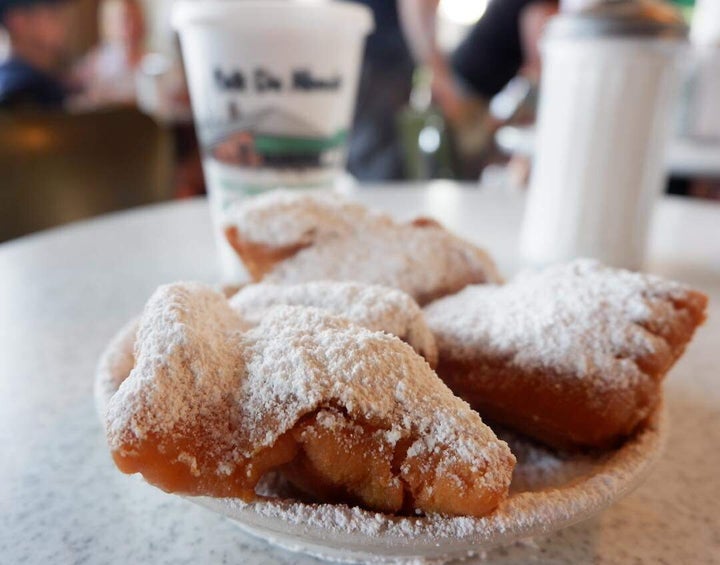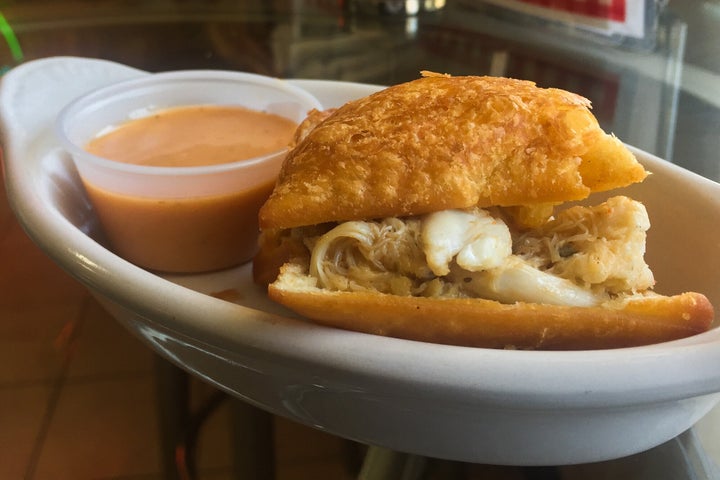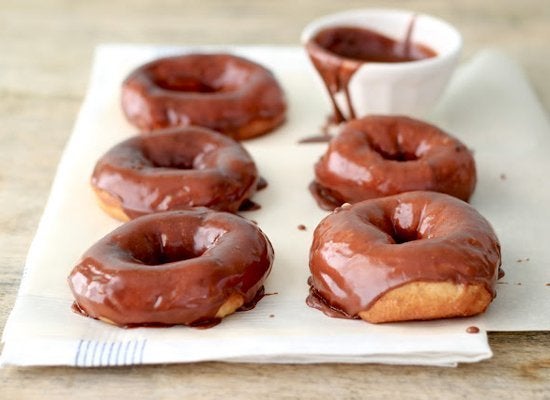It’s rare to find a culture without a storied interpretation of fried dough: Israel offers stuffed sufganiyot, eaten year-round but especially during Hanukkah; in West Africa, monikers of the fried snack range from puff-puff to togbei. You’ll find honey-soaked sopapillas in Mexico; in Italy, there are bite-sized zeppole and their larger counterpart, the bombolone. In the U.S., there’s Navajo frybread from the Southwest, mainstay doughnut shops for yeast-risen favorites and impossibly long lines for experimental confections like the Cronut.
But in New Orleans — birthplace of so many of our most treasured American heritage flavors and foods—there is the beignet.
“The thing about beignets is, they’re basically doughnuts,” Ian McNulty, food and features writer at The New Orleans Advocate, told HuffPost. “It’s fried dough with powdered sugar. What makes it New Orleans is the way New Orleans people obsess over it.
“It’s something that’s been part of shared New Orleans memory. For people who grew up here, the beignet is often one of the first food memories, something that’s specific to where they came from. You go out for beignets, and your parents are telling you that what you’re eating is part of the city you live in. It’s a piece of our identity. It creates a sense of place. New Orleans people will collect beignet earrings, broaches, onesies for babies. It’s a cute, accessible, every-man emblem.”
The word itself comes from a French reference to a deep-fried choux pastry, which is a light, airy dough used to make eclairs and cream puffs.
According to National Geographic’s resource library and the oral history of Cafe du Monde, a New Orleans institution that’s world famous for its beignets, French settlers brought beignets with them as they migrated to the eastern coast of Canada, a region called Acadia, in the 17th century. In the 18th century, thousands of Acadians endured a forced migration that brought many to Louisiana, where their descendants became known as Cajuns. The culinary history of the Acadian people, along with their language, melded and cross-collided with myriad Louisiana cultures already present in the city: those of Native Americans, African-Americans, Spanish, French and the Caribbean.
“Cafe du Monde opened in 1862, selling chicory coffee in the middle of the Civil War,” said Phillipe LaMancusa, co-owner of longtime New Orleans cookbook shop The Kitchen Witch. “And for a long time, they had doughnuts — you can see old photos of the sign that read ‘coffee and doughnuts’ — until 1958 when the name was changed to beignets, the French word. It was a move of marketing genius.”
At Cafe du Monde, you can watch through the kitchen window as workers make hundreds at a time. The yeast dough is easy to put together and keep together, and confectioners sugar is dusted on top. “You’ll see big vats of boiling oil, Big Chief bread flour — once the square-cut dough hits the oil it’s less than four seconds before they rise to the top,” LaMancusa said. “Back there, you never see a break in the action.”
At Loretta’s Authentic Pralines, Loretta Harrison is the veritable queen of the stuffed beignet.
“I researched different types of beignets, and I wanted something to be easier for me to make, Harrison told HuffPost. “I knew I’d be doing most of it myself. The dough I landed on was related to puff pastry, very light, crispy and airy. Before I started making these, beignets weren’t usually filled. I started by stuffing them with praline filling. I said, OK — if we can do this with sweet, let’s see what we could do with savory. I took lump crab, added my signature crabmeat dressing, and now we always have the longest lines at Beignet Fest.”
More paramount than the treat itself is the collective memory of eating them: For some, it was partaking them at beloved Morning Call (closed for business now, but fingers crossed for a new incarnation) among the lush green and dappled light in City Park, or in the French Market surrounded by the calls of street artists and jazz musicians, fingers sticky with sugar as hot dough is pulled apart.
My own memory — of sitting with my suitcase in Cafe du Monde pushing off the knowledge of my encroaching flight departure — marks an especially significant time for me. Boarding the plane, I had confectioners sugar streaked across my clothes, impervious to my attempts to clean it off — and I had no idea that I’d soon be living in the place I was leaving.
Food, and the memory of it, inextricably links us to time and place. In New Orleans, the beignet — regardless of which shop you stake your loyalties to — is a timeless, essential fixture in the city’s foodway.
The line at the original French Market location of Cafe du Monde is full the 364 days a year it’s open, and not everyone follows the same routines in consuming beignets. You can eat them with a cup of chicory coffee or the traditional cafe au lait, a 50/50 mix of coffee and hot milk. You can also choose to wait in line or get table service. But there’s one thing every New Orleanian can agree on: beignets must be eaten hot.
“It’s a shared community experience,” Burt Benrud, vice president at Cafe du Monde, told HuffPost. “After Katrina (the 2005 hurricane that devastated the city), this was amplified even more when we opened back up. All the major networks were there. Those anchors and news media were just echoing the population as a whole — people have been coming in for generations. It’s a validation of New Orleans experience — a rite of passage.”
Source: Read Full Article


